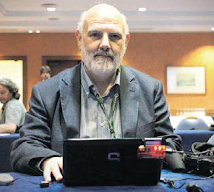
The government gave the go ahead for an 8.5 percent increase in the price of natural gas starting Feb. 1. Food costs have risen particularly rapidly in Romania partly as a result of a drought that destroyed a third of Romania's crops before last autumn's harvest. The inflation problem is partly aggravated by fluctuations in the value of the leu, which has fallen by 16 percent against the euro since August, making goods and services gauged in foreign currencies more expensive. In Romania, telephone bills, gas rent and other items are quoted in euros and paid in lei. The price of services, which is the area that is most susceptible to changes in the value of the leu, increased by an annual 9.9 percent in February as food costs rose 10.2 percent and the prices for non- food goods rose 5.3 percent.
The National Bank of Romania, which raised its main interest rate 1 percentage point to 9 percent last month, is rightly concerned the inflation rate may remain high in the first half because of the weaker leu, wage increases that exceeded an annual 30 percent in January, a consumer lending boom and sizeable government spending. The central bank is scheduled to make its next interest-rate decision on March 26.
The central bank on Feb. 7 raised its end-year inflation forecast to an annual 5.9 percent, from a previous forecast of 4.3 percent, meaning it expects to miss its end-year inflation target of 3 percent, plus or minus a percentage point.











No comments:
Post a Comment